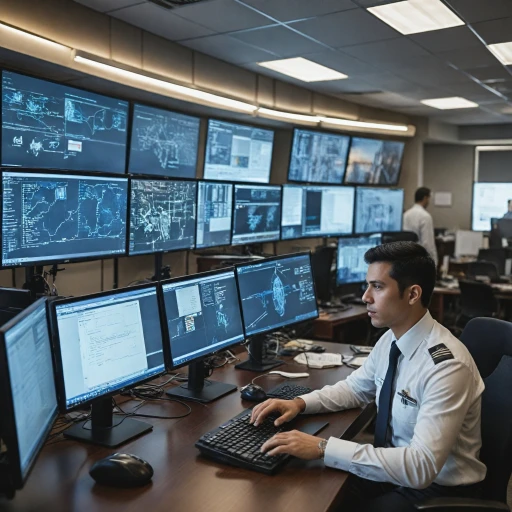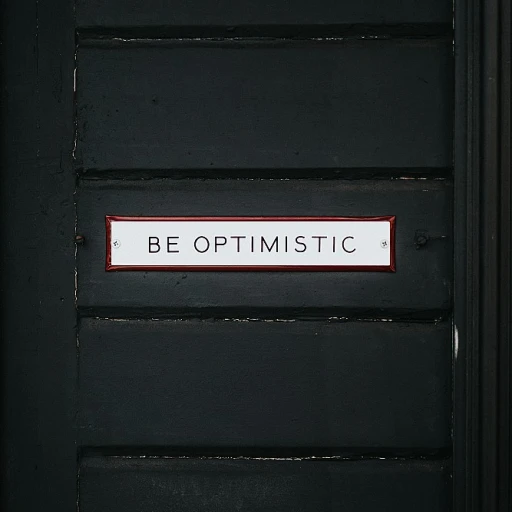
Understanding the Role of Cadence Meetings
The Need for a Purposeful Approach to Meetings
Cadence meetings play a crucial role in driving organizational success, providing a structured platform for aligning goals and facilitating effective communication within teams. These strategic gatherings allow leadership teams to connect regularly, either daily, weekly, or monthly, depending on the operational needs and objectives. Establishing a clear meeting cadence helps ensure a streamlined process for discussing progress, identifying action items, and managing project timelines.
Fostering Clear Communication and Collaboration
In the fast-paced world of modern business, frequent team meetings are invaluable for maintaining momentum and accountability. A well-executed cadence meeting goes beyond merely filling calendars; it serves as a forum for open dialogue, promoting collaboration and timely feedback among team members. This aspect of committing to a regular meeting schedule fosters a culture of transparency and supports the alignment of team efforts with broader organizational goals.
Setting the Stage for Effective Team Interaction
Crafting an agenda is the backbone of any effective meeting. When managed properly, it becomes a tool that ensures time is respected, discussions remain focused, and objectives are achieved. By setting clear expectations and providing team members with a roadmap, organizations can drive meaningful conversations, enhance decision-making, and ultimately propel projects forward.
To delve deeper into this topic and explore strategies for cultivating a collaborative mindset in executive teams, you can refer to this understanding of cross-functional collaboration in C-suite strategy.
Structuring Cadence Meetings for Maximum Impact
Crafting a Clear Agenda
A well-structured agenda is the cornerstone of a successful cadence meeting. It ensures that all team members are on the same page and that meetings remain focused and efficient. Start by outlining the key topics to cover, prioritizing them based on urgency and relevance to the team’s goals. This could include a review of progress on current projects, updates on ongoing tasks, and identified action items that require attention.
Time Allocation for Maximum Productivity
Respecting everyone’s time during meetings is vital. Allocate specific time slots for each agenda item to keep discussions concise and on track. For example, dedicating a few minutes to daily stand-ins or check-ins can provide real-time updates without veering into unnecessary detail. This discipline not only maintains focus but also respects the busy schedules of all involved.
Fostering Open Communication
Effective meetings hinge on open and honest communication. Encourage team members to provide candid feedback and share progress or roadblocks. This practice enhances project management and boosts overall productivity. Regular feedback loops can turn cadence meetings into collaborative forums rather than mere status updates, thereby energizing the team and aligning efforts with strategic objectives.
Utilizing Different Cadences
Different meeting cadences serve different purposes. While weekly meetings can handle immediate action items and short-term goals, monthly or quarterly meetings might focus on long-term strategy and company-wide updates. Deciding the optimal meeting cadence for your team involves understanding the rhythm of your work and aligning it with your strategic goals, such as addressing management's evolving priorities.
For more on organizing different meeting types and structures effectively, you can explore the strategic nuances found in navigating strategic guides tailored for the C-Suite.
Aligning Cadence Meetings with Strategic Objectives
Strategic Alignment: A Key Element of Cadence Meetings
Effectively aligning cadence meetings with strategic objectives is essential in ensuring that your organization is moving in the right direction. Here's how to connect the dots between your meetings and broader company goals:- Clear Meeting Agenda: Begin by establishing a well-defined agenda. Your agenda should be structured to reflect the company's strategic priorities. This approach keeps the discussion focused and ensures that everyone remains on track during the meeting.
- Linking Projects to Goals: Whether it's a weekly meeting or a monthly check-in, ensure that each project's progress is directly related to strategic objectives. By constantly revisiting these connections, teams can prioritize their work more effectively.
- Consistent Communication: Communication is the backbone of any successful team meeting. Regular updates and feedback loops during cadence meetings help the team understand their role in achieving strategic objectives.
- Action Items and Monitoring: Assign action items based on strategic priorities and track progress in subsequent meetings. Use real-time data where applicable to make informed decisions that align with your goals.
- Review and Adapt: As strategy evolves, so should your meeting cadences. Adapt your cadence to ensure that teams remain agile and responsive to changing business environments.
Enhancing Decision-Making Through Cadence Meetings
Boosting Decision-Making Efficiency
Effective decision-making is one of the cornerstones of a successful organization, and cadence meetings can significantly enhance this process. Ensuring that your team is equipped with the information and support they need can lead to more informed decisions that align with your strategic goals. Early planning in your meeting cadence is crucial to laying a strong foundation. Regular intervals, whether they be weekly meetings, monthly check-ins, or quarterly reviews, allow management and team members to stay updated on progress and goals. With a clear meeting agenda, everyone knows what to expect and what is expected of them, facilitating a more focused discussion. A structured cadence meeting enables the team to rapidly evaluate current projects and pivot as necessary. This can be particularly valuable in fast-paced or project-driven environments where real time updates are essential for success. By prioritizing continuous feedback, management can address any barriers inhibiting progress, making real-time adjustments a possibility rather than a luxury. Team meetings should also be platforms that foster open communication. Encourage members to share ideas and challenges they face. Promoting a culture of transparency can bring hidden insights to light and ensure everyone is aligned with the project's objectives. With everyone on the same page, decision-making becomes a shared responsibility, enhancing overall buy-in and commitment. Moreover, consider employing action items at the end of each meeting. Detail specific tasks that need to be completed and designate responsible parties with clear deadlines. This practice not only boosts accountability but also keeps momentum alive between meetings. Ultimately, the key to achieving potency in decision-making lies in designing your cadence meetings to operate frictionlessly. By integrating best practices such as regular check-ins, comprehensive agendas, and fostering open dialogue, your cadence team can achieve a high level of efficiency and clarity in decision-making.Overcoming Challenges in Cadence Meetings
Navigating Common Obstacles in Weekly Meetings
Effective meetings are crucial for project management and realizing strategic goals. Yet, leaders often face challenges that can undermine their efficiency. Addressing these common hurdles ensures that weekly meetings stay productive and aligned with the project agenda.- Time Management: To prevent meetings from becoming time-consuming affairs, it's essential to maintain a tight meeting cadence. Encourage strict adherence to a well-structured meeting agenda to keep discussions on track and ensure that all action items are addressed efficiently.
- Participant Engagement: Engaging team members is a pivotal aspect of successful team meetings. Regularly incorporating feedback sessions can boost active participation, allowing all members to contribute to the progress of your teams.
- Communication Barriers: Clear communication is paramount. Leaders need to facilitate open dialogue allowing for real-time feedback and ideas to flow freely. This practice will promote a more inclusive atmosphere.
- Managing Different Cadence Needs: Every team or project might benefit from varied meeting cadences such as daily stand-ups, weekly updates, or monthly deep dives. Adjusting these intervals based on the team's specific needs can enhance the effectiveness of meetings.
Measuring the Success of Cadence Meetings
Assessing Meeting Outcomes
To truly determine the effectiveness of cadence meetings, it's essential to evaluate their outcomes regularly. By measuring success, leaders can understand whether these meetings are aligning with strategic objectives and contributing to goal achievement.
Quantitative and Qualitative Metrics
- Quantitative metrics: Track the frequency of meetings and the completion rate of action items discussed. Regularly scheduled check-ins such as weekly meetings or monthly reviews can help monitor progress over time.
- Qualitative feedback: Gather insights from team members about meeting effectiveness. Consider conducting surveys or holding retrospective sessions to collect ongoing feedback about communication and team dynamics during these discussions.
Impact on Decision-Making
Assess whether cadence meetings are enhancing decision-making capabilities. Are the meetings helping in efficiently resolving outstanding issues? Are decisions being made swiftly and effectively, improving project outcomes? A pivotal role of cadence meetings is to ensure project management is streamlined and any roadblocks are swiftly addressed.
Link to Strategic Goals
Ensure the outcomes of the meetings are closely linked to the strategic goals of the organization. Regularly review whether meeting agendas and discussions are contributing to long-term objectives, providing value, and justifying the time invested.
Best Practices for Continuous Improvement
- Regular updates to meeting agendas: Continuously refine to ensure they cover all necessary topics efficiently.
- Feedback loops: Implement a strong feedback mechanism, where team members can voice concerns and share insights for improvement.
- Benchmarking against industry standards: Compare your meeting outcomes with industry standards to understand where improvements can be made, keeping the focus on progress and innovation.
Learning from Challenges
Embrace challenges as learning opportunities. If certain meetings fail to achieve their objectives, delve into the reasons why. Are there recurring patterns, such as poor communication or lack of preparation? Addressing these issues can lead to more productive sessions in the future.














